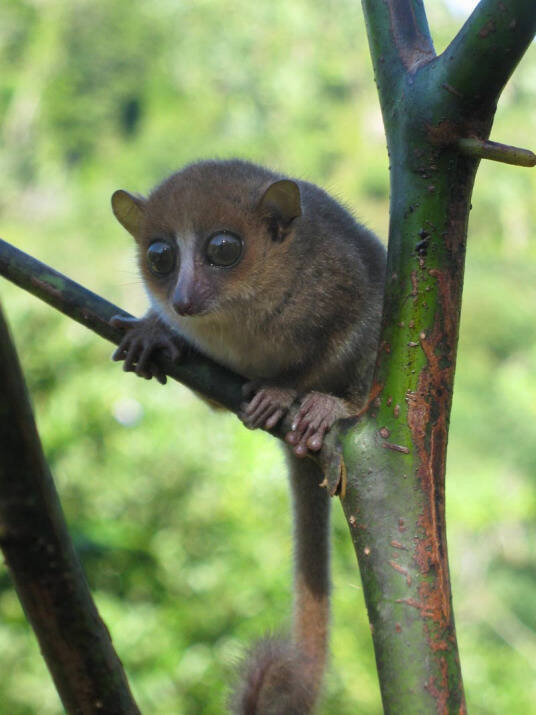Microcebus gerpi
IUCN
LCBasic Information
Scientific classification
- name:Microcebus gerpi
- Scientific Name:Microcebus gerpi,Gerp's Mouse Lemur
- Outline:Primates
- Family:Mylidae Lemuridae
Vital signs
- length:No verification information
- Weight:About 68g
- lifetime:No verification information
Feature
New species discovered in 2012
Distribution and Habitat
The Hepe dwarf lemur is found in central and eastern Madagascar. The Sahafina Forest (29-230 m above sea level), a 15.6 km² lowland tropical rainforest fragment, and the surrounding "sagaraung" (fallow cultivated land), is about 58 km east of Andasibe - living in Madadiya National Park, 18 km west of the Indian Ocean. The geographic range is probably limited to lowland areas in the south (below 700 m) and the Rianila River in the north, covering an area of about 7600 km². The extent of occurrence (EOO) and area of occupancy (AOO) are highly restricted and are estimated to be less than 25 km² and 10 km², respectively.
Appearance
The Heppey's dwarf lemur is an undescribed species that is distinct from the Goodman's dwarf lemur (Microcebus lehilahytsara) and lives 58 km from the Goodman's dwarf lemur. It is significantly larger than its dwarf lemurs, weighing an average of 68 grams, while the Goodman's dwarf lemur weighs about 44 grams. The Jolly's dwarf lemur (Microcebus jollyae), the Heppey's closest relative and southern neighbor, is comparable in size, but differs in tail length and genetics.
Details
Gerp's Mouse Lemur (Microcebus gerpi) is a new species discovered in 2012, and little is known about its behavior, communication methods, ecology or reproductive habits. The species appears to be confined to a small area of lowland evergreen rainforest and is seriously threatened by forest loss.

Listed in the 2014 Red List of Threatened Species of the World Conservation Union (IUCN) ver3.1 - Endangered (EN).
Protect wild animals and stop eating game.
Maintaining ecological balance is everyone's responsibility!








